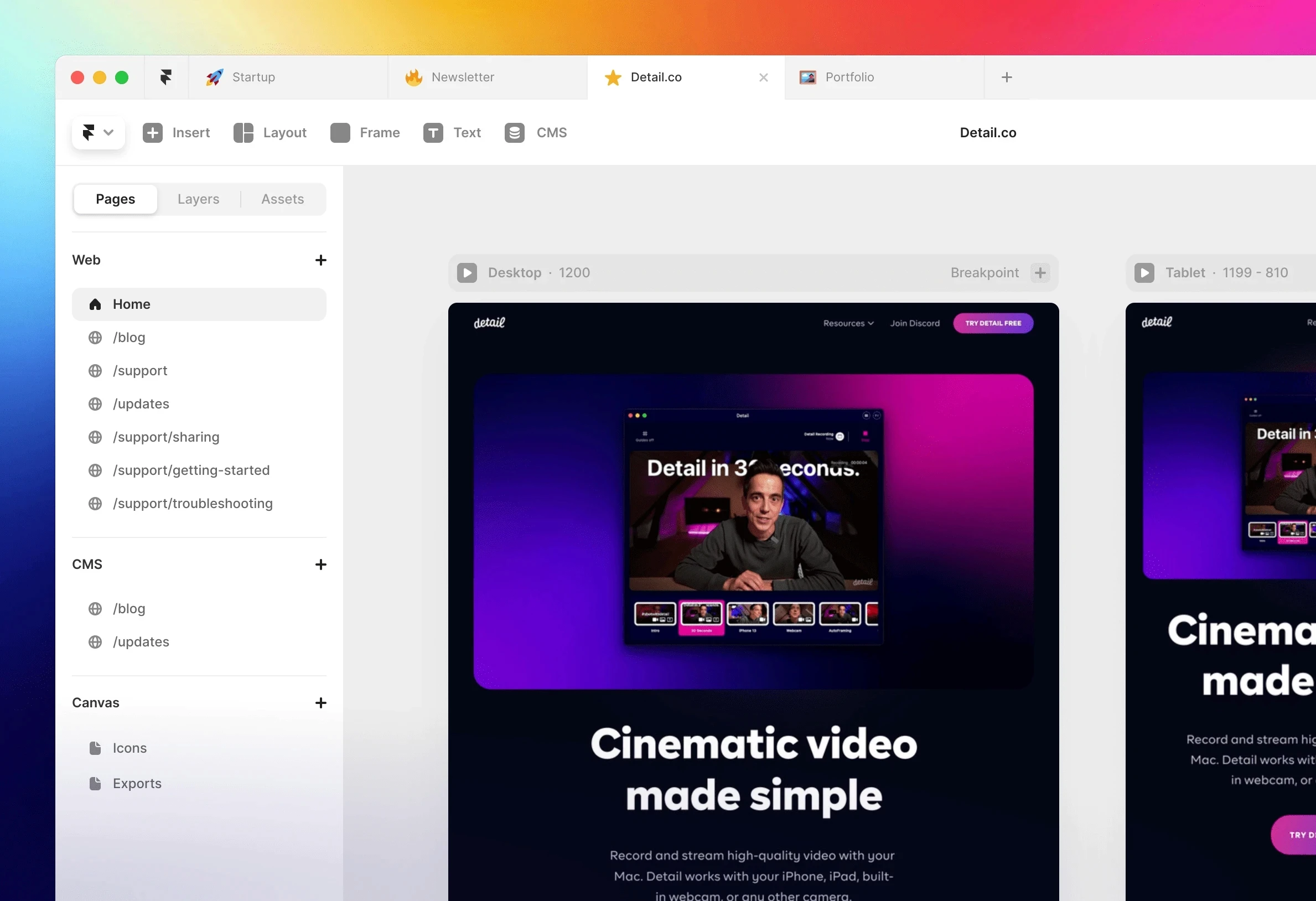Why designers should consider adding no-code tools to their stack.
Feb 15, 2023
As the world becomes increasingly digital, it’s more important than ever for designers to stay up-to-date with the latest technologies and tools. One trend that has gained a lot of attention in recent years is the rise of no-code tools, which allow people to create websites, apps, and other digital experiences without needing to know how to write code.

Two popular no-code tools that designers should consider learning are Webflow and Framer. In this article, we’ll explore why designers should consider adding these tools to their skill set.
No-code tools can speed up the design process
When it comes to designing digital experiences, one of the biggest challenges can be getting from concept to implementation quickly. Traditionally, this process involved creating designs in tools like Sketch or Adobe XD and then handing them off to developers to build. This handoff can take time and can often result in miscommunications or unexpected changes.
No-code tools like Webflow and Framer, on the other hand, allow designers to create interactive prototypes that are much closer to the final product. This means that designers can test their designs and get feedback earlier in the process, which can lead to faster iteration and ultimately a better end product.
No-code tools can help bridge the gap between design and development
Another benefit of no-code tools is that they can help bridge the gap between design and development. Since designers can create interactive prototypes that are closer to the final product, they can work more closely with developers to ensure that the final product matches the original vision.
In addition, many no-code tools have features that allow designers to export code or collaborate with developers in other ways. This can help ensure that the final product is of high quality and that the design is faithfully translated into code.
No-code tools can help designers create more complex interactions
Designing interactions can be a challenge, especially if the designer is not familiar with coding. No-code tools like Framer can help solve this problem by providing designers with a way to create more complex interactions without needing to write any code.
Framer allows designers to create prototypes that incorporate animations, scroll effects, and other interactive elements. This can help designers create more engaging and compelling digital experiences, which can ultimately lead to a better end product.
No-code tools can help designers create more responsive designs
Responsive design, or designing for different screen sizes and devices, is becoming increasingly important as more people access the web on a variety of devices. No-code tools like Webflow make it easy for designers to create responsive designs without needing to write any code.
Webflow’s visual grid system allows designers to create designs that automatically adjust to different screen sizes. This can help ensure that the final product looks great on any device, without the need for additional development work.
Conclusion
No-code tools like Webflow and Framer can be powerful tools for designers, helping to speed up the design process, bridge the gap between design and development, create more complex interactions, and create more responsive designs. As the world becomes increasingly digital, designers who add these tools to their skill set will be well-positioned to create compelling digital experiences that meet the needs of users on a variety of devices.





